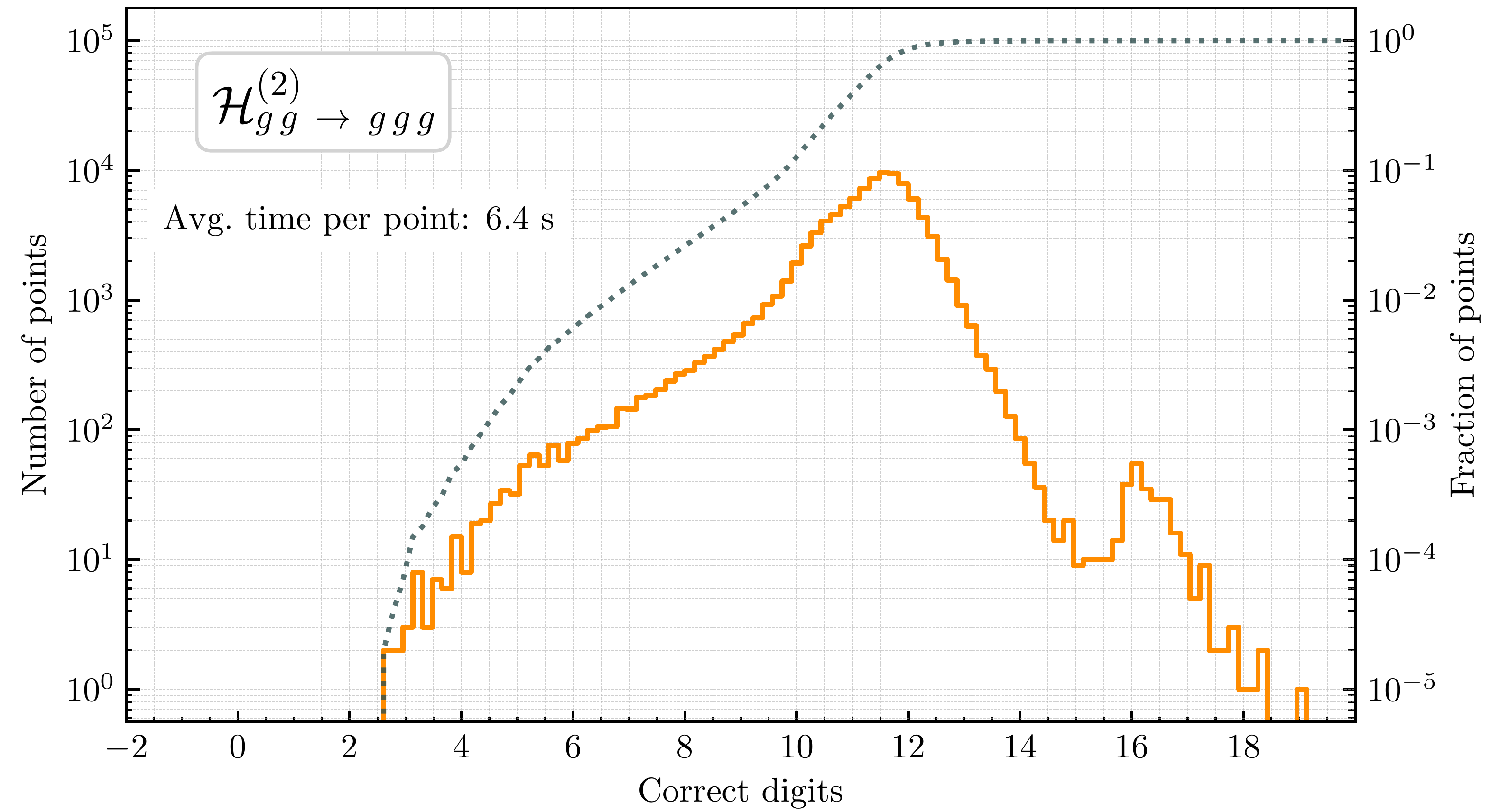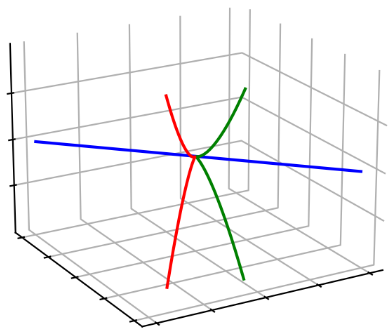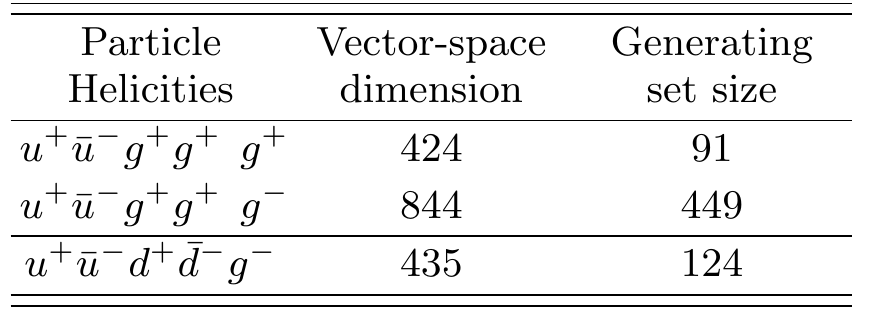Non-Planar Two-Loop Amplitudes
for Five-Parton Scattering
arXiv:2311.10086
Loops & Legs 2024

Find these slides at gdelaurentis.github.io/slides/loopslegs_apr2024
Introduction
Overview


Pikelner, Pedron, Guadagni, Magnea, van Hameren, Vicini, $\dots$
Renomalization / $\gamma^5$-schemes
Gracey, Heinrich, Weißwange, Kühler, Stöckinger$\dots$
Feynman Integrals
Chaubey, Behring, Nega, Jones, Zoia, Banik, Page, Broadhurst, $\dots$
Bluemlein, Yang, Moch, Schönwald, Maier, $\dots$
$\sigma$'s at N$^{(2-3)}$LO
Sotnikov, Neumann, Chen, Mella, Savoini, $\dots$
Automation
Lange, Shtabovenko, Zoller$\dots$
Zhang, Davies, Kerner, $\dots$
Top-quark(s), internal or external
Vitti, Coro, Wang, Magerya, $\dots$
Resummation
Novikov, Andersen, Li, $\dots$
Precision Physics Requires NNLO Corrections
Status of Two-Loop Five-Point Amplitudes
| Process | Analytical Amplitudes | Numerical Codes | Cross Sections |
|---|---|---|---|
| $pp \rightarrow \gamma\gamma\gamma$ | [3$\kern-2.2mm\phantom{x}^\star$, 4$\kern-2.2mm\phantom{x}^\star$, 5] | [3$\kern-2.2mm\phantom{x}^\star$, 5] | [1$\kern-2.2mm\phantom{x}^\star$, 2$\kern-2.2mm\phantom{x}^\star$] |
| $pp \rightarrow \gamma\gamma j$ | [6$\kern-2.2mm\phantom{x}^\dagger$, 7$\kern-2.2mm\phantom{x}^\dagger$, 9] | [6$\kern-2.2mm\phantom{x}^\dagger$] | [8$\kern-2.2mm\phantom{x}^\dagger$] |
| $pp \rightarrow \gamma jj$ | [10] | [10] | |
| $pp \rightarrow jjj$ | [11$^\dagger$, 12, 13, 14] | [11$^\dagger$,14] | [15$\kern-2.2mm\phantom{x}^\dagger$, 16$\kern-2.2mm\phantom{x}^\dagger$] |
| $pp \rightarrow Wb\bar b$ | [17$\kern-2.2mm\phantom{x}^\dagger$, 18$\kern-2.2mm\phantom{x}^{\dagger\ast}$, 19a$\kern-2.2mm\phantom{x}^\dagger$] | [19a$\kern-2.2mm\phantom{x}^\dagger$, 19b$\kern-2.2mm\phantom{x}^\dagger$] | |
| $pp \rightarrow Hb\bar b$ | [20$^{\dagger\ast}$] | ||
| $pp \rightarrow Wj\gamma$ | [21$^\star$] | ||
| $pp \rightarrow Wjj$ | [17$\kern-2.2mm\phantom{x}^\dagger$] | ||
| $pp \rightarrow ttH$ | [22] | ||
[1] Chawdhry, Czakon, Mitov, Poncelet '19
[3] Abreu, Page, Pascual, Sotnikov '20
[5] Abreu, GDL, Ita, Klinkert, Page, Sotnikov '23
[7] Chawdhry, Czakon, Mitov, Poncelet '21
[9] Agarwal, Buccioni, von Manteuffel, Tancredi '21
[11] Abreu, Febres Cordero, Ita, Page, Sotnikov
[13] GDL, Ita, Klinkert, Sotnikov '23
[15] Czakon, Mitov, Poncelet '21'
[17] Abreu, Febres Cordero, Ita, Klinkert, Page, Sotnikov '21
[2] Kallweit, Sotnikov, Wiesemann '20
[4] Chawdhry, Czakon, Mitov, Poncelet '20
[6] Agarwal, Buccioni, von Manteuffel, Tancredi '21
[8] Chawdhry, Czakon, Mitov, Poncelet '21
[10] Badger, Czakon, Hartanto, Moodie, Peraro, Poncelet, Zoia '23
[12] Agarwal, Buccioni, Devoto, Gambuti, von Manteuffel, Tancredi '23
[16] Chen, Gehrmann, Glover, Huss, Marcoli '22
[18] Badger, Hartanto, Zoia '21
[20] Badger, Hartanto, Kryś, Zoia '21
[22] Catani, Devoto, Grazzini, Kallweit, Mazzitelli, Savoini '22

this is scheme dependant.

C++ Code available at
Mathematica, Python and C++ scripts.
Numerical Computation
Color Algebra in the Trace Basis



Partial Amplitudes & Finite Remainders
Peraro ('16)
Numerical Generalized Unitarity @ 2 Loops Ita (‘15) Abreu, Febres Cordero, Ita, Page, Zeng (‘17)

Analytic and Geometric Structure
based on:
GDL, Page (JHEP 12 (2022) 140)
Fieds of Fractions of Polynomial Quotient Rings

(i.e. what happens at codimension one)
Abreu, Dormans, Febres Cordero, Ita, Page ('18)

Physics $\kern38mm$ Geometry $\kern38mm$ Algebra
(i.e. what happens at codimension greater than one)



Analytic Reconstruction
see also tomorrow’s talks by Chawdhry and Liu
also based on:
GDL, Ita, Page, Sotnikov (to appear)
Vector Spaces of Rational Functions

De-correlating the Residues

Spinor-Helicity Results


$\phantom{\circ}$ e.g. no function has a $\text{tr}_5$ singularity, nor a pair of $\langle i | j + k | i]$ in the same denominator.
Quarks from Gluons
$\phantom{\circ}$ It only requires as many evaluations as the dimension of the vector space.
see e.g. $\;$
Outlook
multiplicity (m) and mass dimension (d):
GDL, Maître ('20)
$\displaystyle \kern20mm \text{Ansatz size} \geq \small \left(\mkern -9mu \begin{pmatrix}\, m(m-3)/2 \, \\ \, d/2 \, \end{pmatrix} \mkern -9mu \right)$

and $\;$
GDL, Page ('22) $\;$see also: $\;$
GDL, Maître ('19) $\;$$pp\rightarrow Vgg\; \text{(NMHV)}: \; 13\text{MB} \; r_i, \; 1\text{MB} \; M_{ij}.$
for your attention!
markdown, html, revealjs, hugo, mathjax, github
Backup Slides
Constraints from Poles
Bootstrapping trees (?)
Note: compared to BCFW there is no information about residues.
Partial Fraction Decompositions
$2.$ ideally, to answer $(1.)$ without having access to an analytic expression.
Beyond Partial Fractions
The Numerator Ansatz

Integer programming $\rightarrow$ enumerate sols. $\vec\alpha,\vec\beta$
Perron and Furnon (Google optimization team)



